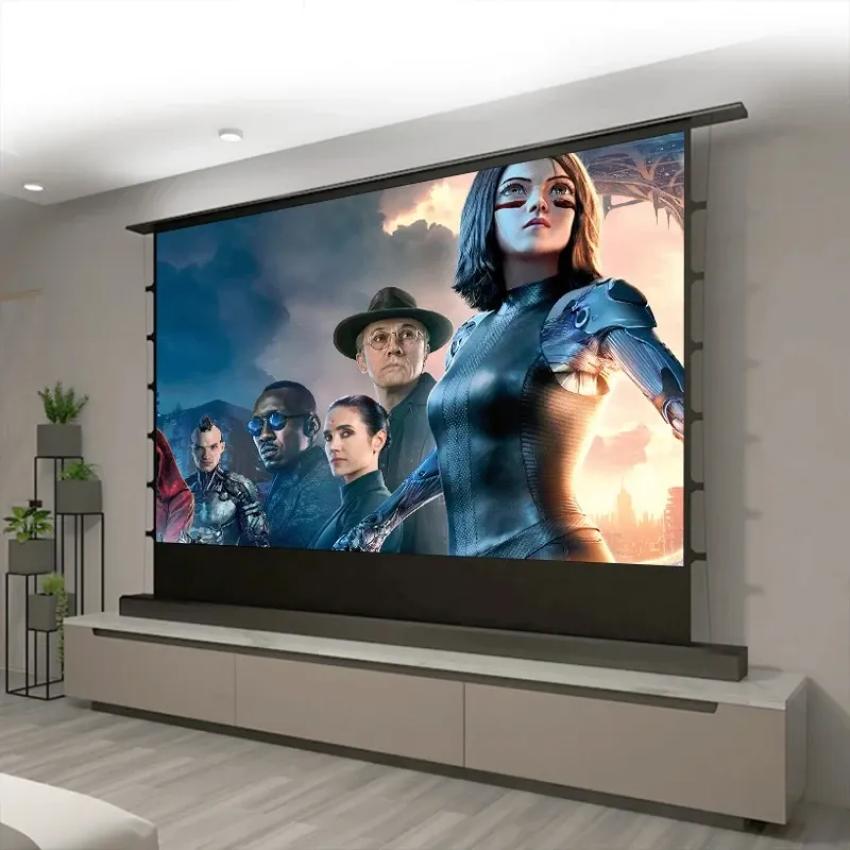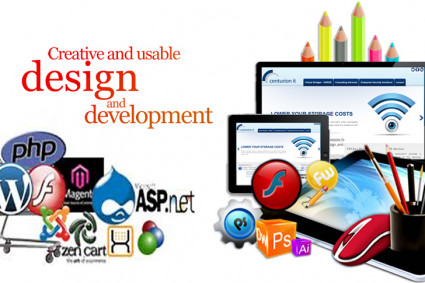
If you’ve ever thought “the projector looks fine on a white wall,” you’re quietly leaving 30–60% of your image quality on the table. Projector screens aren’t just blank canvases; they’re engineered optical surfaces that determine brightness, contrast, color accuracy, and viewing comfort just as much as the projector itself. This guide explains the screen types, materials, sizes, and installation details that actually matter—so your next presentation, class, or movie night looks the way you imagined.
Why the Screen Matters (More Than You Think)
A good projector screen does three things exceptionally well:
Improves contrast: Specialized coatings absorb stray light and deepen blacks, preventing your picture from washing out.
Controls brightness directionally: “Gain” focuses reflected light toward the audience rather than the ceiling or side walls.
Keeps images uniform: Tensioning and proper materials eliminate waves and hotspotting for sharp, even detail across the entire surface.
Painted walls and basic fabrics can’t match this. The result is a flatter, duller image with visible texture and uneven brightness—especially noticeable on slides, spreadsheets, and fine text.
The Main Types of Projector Screens
Fixed-Frame (Tensioned):
The gold standard for critical viewing. A rigid frame stretches the material flat—ideal for home theaters, boardrooms, and classrooms where the screen is a permanent fixture. Pros: dead-flat surface, premium look. Cons: needs dedicated wall space.
Motorized Drop-Down:
Rolls up when not in use. Great for multipurpose spaces. Look for tab-tensioned versions to keep the material flat over time. Consider a black drop (extra top border) to position the image at eye level in tall rooms.
Ceiling-Recessed:
Disappears completely into the ceiling slot. Cleanest aesthetic in executive suites, sanctuaries, and renovated classrooms. Requires planning for power, control, and ceiling space.
Portable Tripod / Pull-Up:
Fast, flexible, and budget-friendly for trainers and mobile presenters. They won’t be as flat as tensioned screens, but they’re unbeatable for setup speed.
UST ALR Screens (Ultra-Short-Throw Ambient Light Rejecting):
Purpose-built for ultra-short-throw projectors that sit inches from the screen. The surface uses microstructures that reflect steep-angled light from below toward viewers while rejecting ambient light from above/around. Do not pair UST projectors with standard matte-white screens—you’ll see glare and washout.
Rear-Projection Screens:
Place the projector behind the screen for cleaner installs and zero shadows. Common in trade shows, storefronts, and stages. Needs space for the projector throw behind the wall.
Acoustically Transparent (AT):
Perforated or woven material lets you place speakers behind the screen for perfect dialogue localization. Ideal in theaters and auditoriums. Pair with speakers and EQ that compensate for the material’s acoustic effects.
Screen Size & Aspect Ratio: Get the Geometry Right
Aspect ratio should fit your content and projector:
16:9 – Standard for video, TV, and most modern presentations.
16:10 – Popular in education and enterprise for extra vertical space (great for spreadsheets).
4:3 – Legacy gear only; avoid for new installations.
Sizing rules of thumb:
Viewing distance ≈ 1.2× to 1.6× screen width for mixed use (presentations + video). Closer for immersive video, farther for spreadsheet-heavy work.
Image height: The bottom should sit ~24–36 inches above the floor in seated rooms so rear rows see over heads.
Ceiling height: Use a black drop on motorized screens to position the active image where eyes naturally fall.
Gain, Viewing Angle, and Ambient Light
Gain describes how reflective a screen is compared to a reference white (1.0 gain).
Gain ~1.0 (matte white): Wide viewing angles, natural color, great in light-controlled rooms.
Higher gain (1.3–1.8): Looks brighter from the center seats but narrows viewing angles and can introduce hotspotting.
ALR/CLR (ambient/ceiling light rejecting): Uses directional layers to favor projector light and reject stray illumination. Crucial in bright rooms.
Rule: In dark rooms, a good matte-white screen is king. In bright rooms, pick ALR/CLR tuned to your projector type (standard-throw vs. UST). Always check the recommended throw and viewing cone in the material specs.
Match the Screen to the Projector (Throw & Lens)
Standard-Throw Projectors:
Work with matte-white or conventional ALR screens. Ensure your throw distance can fill the screen you want; use the projector’s calculator to confirm.
Short-Throw (ST) & Ultra-Short-Throw (UST):
Require compatible materials. UST projectors demand UST-specific ALR surfaces—using the wrong screen leads to milky blacks, glare, and uneven brightness.
Tension & Flatness:
If you care about sharp text, choose tensioned fixed-frame or motorized screens. Non-tensioned rollers are fine for casual use but can develop waves over time.
Installation Tips for a Flawless Picture
Center the image physically first. Use lens shift and mount positioning before resorting to keystone correction (which reduces effective resolution).
Mind the borders. A black velvet frame around fixed screens absorbs overscan and enhances perceived contrast.
Plan control & power. Motorized screens may need wired wall switches, IR/RF remotes, triggers from the projector, or integration with room control systems.
Consider wall structure. Use proper anchors; screens focus a lot of weight on a small area.
Leave service access. For recessed installs, ensure you can reach motors and cabling later.
Use Cases & Recommended Styles
Home Theater / Media Rooms:
Fixed-frame, matte-white (gain ~1.0) if you can darken the room. If you watch with lights on, consider ALR. For living-room TV replacement with a UST projector, use a UST ALR fixed frame.
Boardrooms & Classrooms:
Motorized tab-tensioned with a durable matte-white or ALR material. 16:10 often suits data-heavy slides; aim for sizes that keep small text legible in the back row.
Houses of Worship & Auditoriums:
Large fixed frames or ceiling-recessed motorized screens. Consider rear projection where space and stage design allow to avoid shadows.
Training & Mobile Presentations:
Portable tripod or pull-up screens with robust carry cases. Keep to 16:9 and sizes that fit common rooms (100–120″ diagonal is a sweet spot).
Retail & Events:
Rear-projection for clean installs, or ALR for bright spaces. If the projector must be near the screen, choose UST with the correct surface.
Care, Cleaning, and Longevity
Dust gently with a microfiber cloth; avoid aggressive chemicals.
Roll up only when dry and at room temperature to prevent sticking.
Protect edges—they’re the first place tensioning can loosen if mishandled.
Calibrate occasionally: A quick brightness/contrast check ensures you’re using the full dynamic range of your projector on that screen.
Common Pitfalls (So You Don’t Make Them)
Pairing a UST projector with a standard matte-white screen—expect glare and poor contrast.
Choosing too much gain and ending up with hotspotting or narrow viewing angles.
Picking the wrong aspect ratio for your content and living with black bars.
Mounting a non-tensioned screen in a room with temperature swings—waves will show in charts and subtitles.
Ignoring room light control; even the best screen can’t beat a window at noon without shades or ALR.
Budget Tiers: Good / Better / Best
Good: Portable tripod or non-tensioned motorized matte-white. Ideal for occasional use and small budgets.
Better: Fixed-frame or tab-tensioned motorized matte-white; larger sizes with clean borders; reliable flatness.
Best: Specialty materials (ALR/UST ALR, acoustically transparent), recessed motorized, or custom sizes with velvet frames and precise tensioning.
Think of the screen as a one-time foundation: choose well once, and you can upgrade projectors for years.
Make It Easy with a Trusted Partner
Selecting projector screens is equal parts optics and logistics: matching material to room light, size to seating, and screen type to projector throw—then planning mounts, controls, and cable runs. That’s where Tecisoft shines. From UST living-room setups to auditorium-sized, tab-tensioned installs with control-system integration, Tecisoft can spec the right screen material, confirm throw and seating geometry, and deliver a clean, documented installation with training and support. Explore solutions with Tecisoft to get a tailored short list—complete with screen material samples, size recommendations, mounting drawings, and an ambient-light plan.
Quick Buyer’s Checklist
Room lighting: controllable or bright? (Matte-white vs. ALR/UST ALR)
Projector type: standard, short-throw, or ultra-short-throw
Screen size & aspect ratio: 16:9 or 16:10, diagonal that suits viewing distance
Mounting style: fixed-frame, motorized (tab-tensioned), recessed, or portable
Gain & viewing angle: ~1.0 for dark rooms; directional ALR for bright rooms
Control & power: triggers, wall switches, integration with room control
Future-proofing: tensioned surface, service access, and cable pathways
Choose the right surface and your projector won’t just be brighter—it’ll be brilliant.




